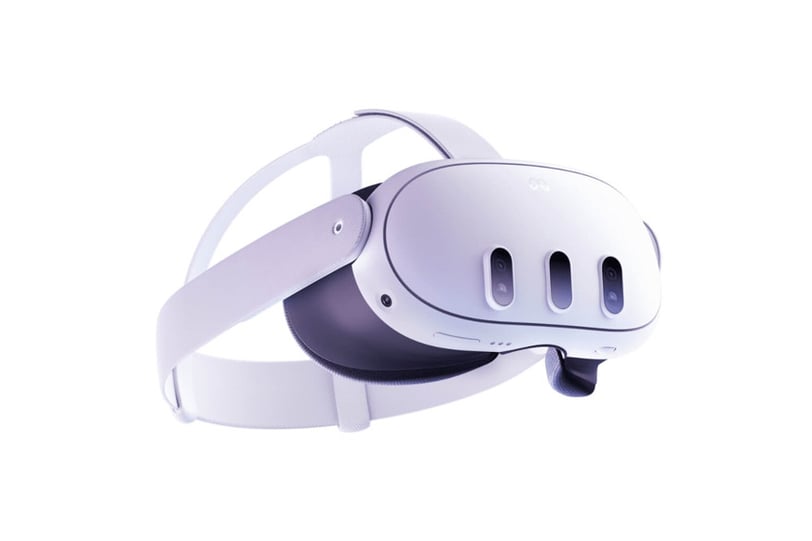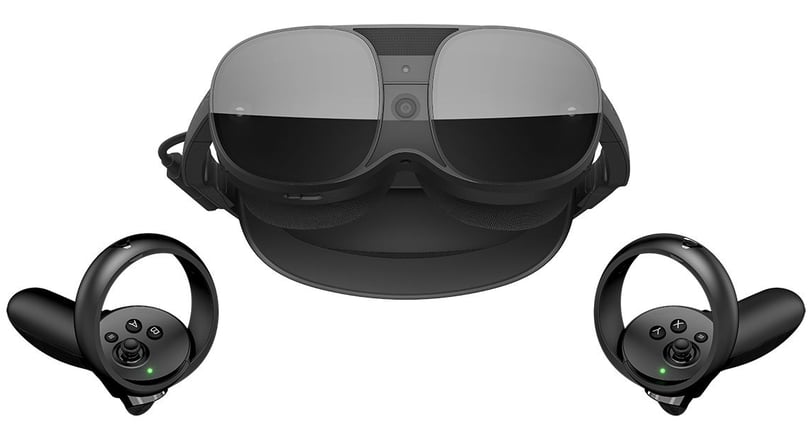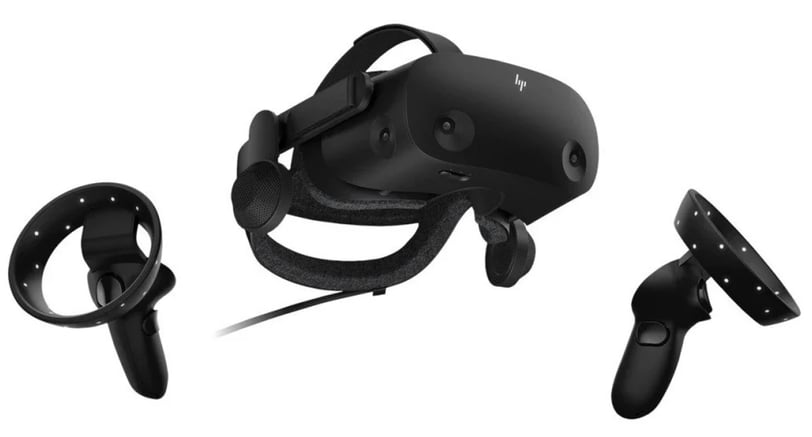
Discover Next-Gen Gaming VR Headsets
Explore the VR revolution with cutting-edge headsets featuring OLED and MicroLED displays, AI tracking, and ergonomic designs. Uncover the best gaming VR headsets for an immersive experience.
GADGET REVIEWS
3/5/20254 min read


(image credit: Pixabay)
The VR Revolution
Virtual reality is reaching a new milestones with breakthrough technologies that redefine digital experiences. Sleeker, lighter headsets now feature advanced OLED and microLED displays, delivering ultra-high resolution and vibrant colors that creating virtual worlds with stunning clarity.
Enhanced tracking systems wield sophisticated sensors, AI algorithms, and refined inside-out tracking to register every subtle movement. Their design sparks intuitive, responsive interactions. Ergonomic upgrades crafted from lightweight materials, balanced structures, and customizable fittings cradle you in lasting comfort. These innovations merge the physical and digital realms, marking a significant evolution for gaming, professional collaboration, and education.
Advancements in Tracking Technology
The key to immersion lies in a system’s ability to capture and interpret each nuance of a user’s movements. Recent breakthroughs in tracking technology have pushed the boundaries of precision, in order to achieve sub-millimeter accuracy and make digital interactions nearly indistinguishable from real world actions.
Sensor Fusion and AI: Modern headsets integrate multiple cameras and inertial measurement units (IMUs) with AI-powered algorithms. The combination predicts user motion with minimal latency, ensuring a seamless virtual experience.
Enhanced Environmental Awareness: Complementary external sensors now work with onboard systems to maintain accurate tracking, even under challenging lighting conditions. This results in a more natural and responsive interaction within virtual spaces.
Innovations in sensor fusion, AI-driven prediction, and environmental sensing are revolutionizing how we interact with virtual worlds. Thus, setting a new standard for immersion and interactivity in digital experiences.
Comfort Improvements
Historically, bulky and heavy VR headsets hindered immersive experiences by limiting the time users could wear them comfortably. Recently, manufacturers have made significant strides in ergonomic design to ensure longer and more enjoyable sessions.
Lightweight Materials: Advanced composites and refined battery technology have significantly reduced overall weight, making headsets easier to wear for extended periods.
Improved Fit and Ventilation: Redesigned head straps, adjustable fittings, and enhanced ventilation systems combat common discomforts like heat buildup and pressure points. Soft-touch materials and a more balanced center of gravity also reduce neck strain, ensuring that users remain comfortable.
Latest VR Headsets
Modern headsets now feature ultra-high-resolution displays—often leveraging OLED or MicroLED panels—that provide crisp visuals and vibrant color reproduction. Advances such as high refresh rates and integrated eye-tracking ensure that users enjoy improved image quality and reduced latency. Leading brands continue to push the envelope.
Meta’s Quest Series
Key Features:
All-in-one, standalone design with integrated inside-out tracking
High-resolution displays (e.g., Quest 2’s 1832×1920 pixels per eye)
Supports both native standalone use and PC tethering via Oculus Link/Air Link
Extensive content ecosystem with games, social VR, and creative apps
Why It Stands Out: The Meta Quest 3's accessible, portable design and competitive pricing make it one of the most user-friendly VR systems on the market. The balance of performance and ease of use—without the need for an external PC—sets it apart as a great entry point into virtual reality.
Best For: Casual gamers, social VR enthusiasts, and newcomers to VR who want a hassle-free, wireless experience. It also appeals to users looking for versatility through both standalone and PC-connected modes.
(image credit: Meta Platforms, Inc.)
HTC Vive XR Elite
Key Features:
Inside-out tracking powers both standalone and tethered modes.
A premium, modular build adapts to varied environments.
High-resolution visuals and a broad field of view spark mixed-reality encounters.
What Sets It Apart: The Vive XR Elite fuses virtual and augmented realities, inviting you on a journey of immersive discovery. Its inventive tracking and adaptable design shape games that thrill and creative projects that inspire, carving a new chapter in mixed-reality innovation.
Best For: Crafted for professionals, developers, and creative spirits who need a system that fuses VR and AR realms. It draws anyone chasing a premium, adaptable experience that transforms gaming.
(image credit: HTC Corporation)
HP Reverb G2
Key Features:
PC-tethered design that leverages high-performance hardware
Exceptional visual fidelity with LCD panels up to 2160×2160 pixels per eye
Compatibility with Windows Mixed Reality and SteamVR ecosystems
Ergonomic design focused on long-session comfort despite cable tethering
Why It Stands Out: With one of the highest resolutions available, the Reverb G2 delivers crystal-clear visuals that are well suited for simulation, design, and professional visualization. Its focus on high fidelity makes it a leader in detailed and immersive graphical performance.
Best For: Crafted for users with powerful PCs who crave a visual feast—from simulation buffs to pro designers and enterprise pioneers. Its clarity fuels tasks that call for precision and detail.
(image credit: HP Inc.)
Final Verdict
Virtual reality has reached a transformative milestone. Cutting-edge OLED and microLED displays deliver unmatched clarity and vibrant visuals. While advanced AI-driven sensor fusion and inside-out tracking capture even the slightest movements with near-zero latency. Ergonomic breakthroughs such as lighter materials, balanced designs, and enhanced ventilation ensure extended comfort for marathon sessions. Flagship systems like Meta’s Quest Series, HTC Vive XR Elite, and HP Reverb G2 highlight these advancements, catering to diverse needs from casual gaming to professional applications. Overall, the advancements seamlessly merge the physical and digital, setting a new standard for immersive experiences.






LevelUpGamer
Your source for gaming and gadget reviews.
© 2024. All rights reserved.
Dear Readers,
Thank you for taking time out of your day to visit my blog. I appreciate the chance to share my reviews with you as I embark on this journey of being a first time blogger.
In the full effort of disclosure, I'm compelled to tell you that to enhance the quality and depth of my content, I occasionally use the help of AI tools. This helps refine my writing, provides creative suggestions, and ensures factual accuracy where needed. While the final product reflects my voice and perspective, AI plays a supportive role.
My commitment to transparency is and always will be at the forefront of what I do here. If you ever have questions about a specific piece or the process of its creation, I’m more than happy to provide further insights.
Thank you for your understanding and for being part of this journey. Your engagement and feedback will surely inspire me to keep growing and improving.
Regards,
LevelUpGamer
